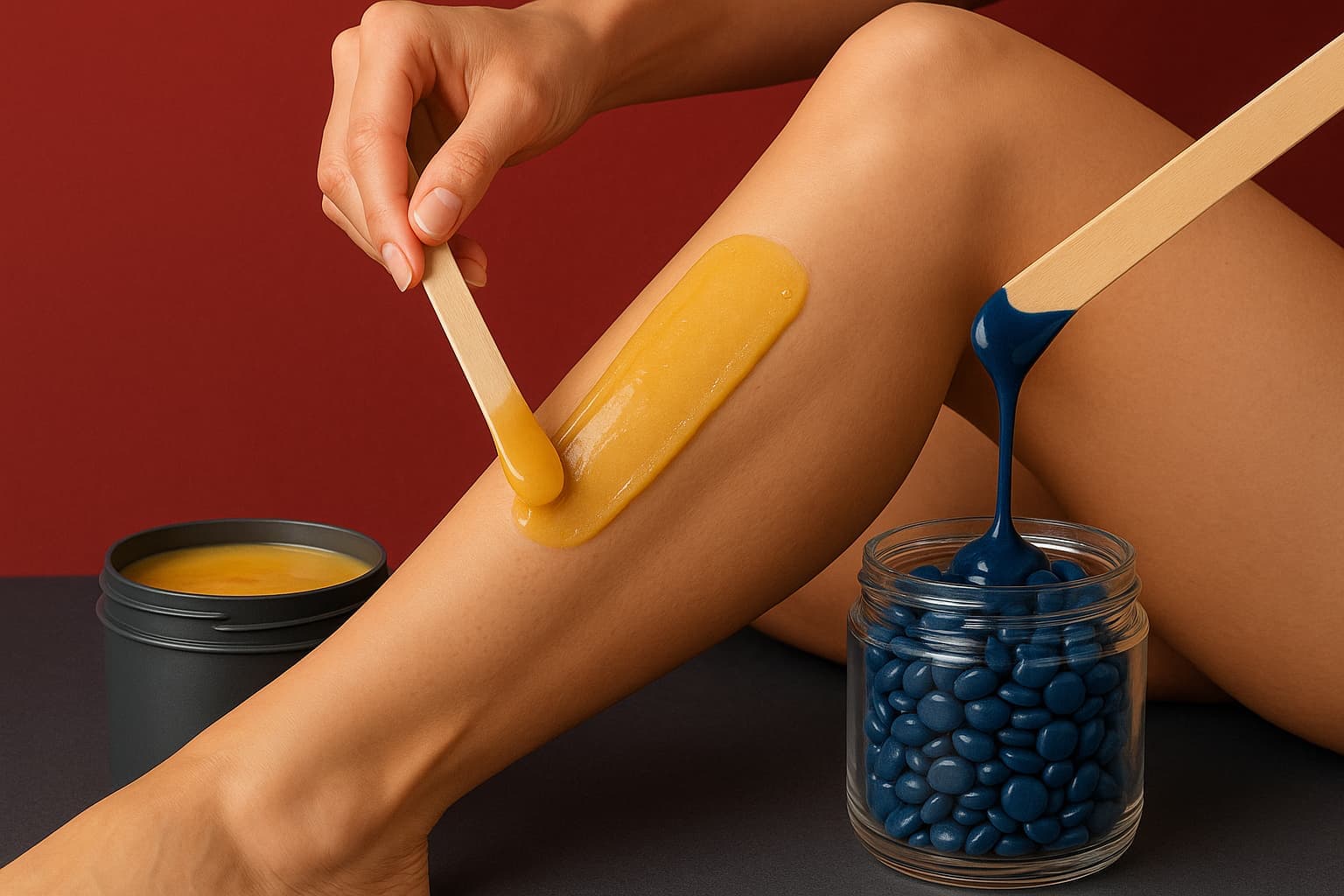Let’s be honest — waxing isn’t exactly a relaxing experience, so choosing the right type of wax can make a big difference. If you’ve ever stood in the beauty aisle staring at soft wax and hard wax, wondering which one to pick, you’re not alone.
This guide breaks it all down in plain English — no jargon, no fluff — just real talk about hard wax vs. soft wax, especially when it comes to popular areas like legs, face, and underarms.
So, What Exactly Is Hard Wax?
Hard wax is the one that doesn’t need cloth strips — it hardens on your skin and then comes off on its own. The cool thing? It grabs the hair, not the skin, which means it usually hurts a bit less than soft wax. That’s why it’s a top choice for more sensitive areas like the bikini line, armpits, or upper lip.
Why people like it:
- It’s gentler on the skin
- You don’t need strips
- Works well on short, thick hairs
- Less irritation after
Downsides:
- It’s usually pricier
- Takes more time to apply and dry
- Not ideal for large areas like legs
And What About Soft Wax?
Soft wax — also called strip wax — is applied in a thin layer, and then you press a cloth strip on top and rip it off. It’s the one you’ll often see used in salons, especially for legs or arms.
Why some prefer it:
- Covers big areas quickly
- Affordable and widely available
- Great for finer hair on the legs or back
What to watch out for:
- It pulls on the skin, not just hair — so it can sting
- Leaves sticky residue if not removed well
- Not ideal for sensitive zones
Soft Wax or Hard Wax for Legs?
If you’re wondering about hard wax vs soft wax for legs, here’s the simple answer: soft wax is faster and more practical for big areas like legs. It spreads thin and grabs even the fine hairs.
But if your skin is sensitive or your leg hair is thick and stubborn, hard wax might give a more comfortable experience — especially if you’re waxing at home and want to avoid redness.
What’s the Actual Difference?
People often ask, “what’s the difference between hard and soft wax?” Here’s a quick side-by-side:
| Hard Wax | Soft Wax | |
| Needs strips? | Nope | Yes, fabric or paper strips needed |
| Pain level | Usually lower | Can be higher, especially for newbies |
| Best for | Small/sensitive areas | Large body areas |
| Residue | Minimal | Sometimes sticky |
| Speed | Slower process | Faster for full legs/arms |
Is Hard Wax Better Than Soft Wax?
It depends on your body and how much you can tolerate. Some swear by hard wax because it’s gentler on skin and doesn’t stick to it as much. Others love the speed and smooth results they get with soft wax, especially for legs.
Here’s a good rule of thumb:
- For smaller, delicate areas → go with hard wax
- For big zones like legs or back → soft wax might be better
What Should You Know About Soft Wax?
One thing to remember: soft wax removes not just hair, but also some skin — which can help exfoliate, but might leave you red or irritated if your skin’s sensitive. Make sure you prep your skin well and follow up with a calming lotion afterward.
Final Thoughts: Hard or Soft?
Both types of wax have their place — and your choice comes down to your skin type, the area you’re waxing, and how much time you want to spend. If you’re still unsure, you can even test both and see which one works better for your body.
Quick advice:
- Use hard wax for your bikini line, face, or underarms
- Use soft wax for legs, arms, or your back when you want quick results









Leave a Reply